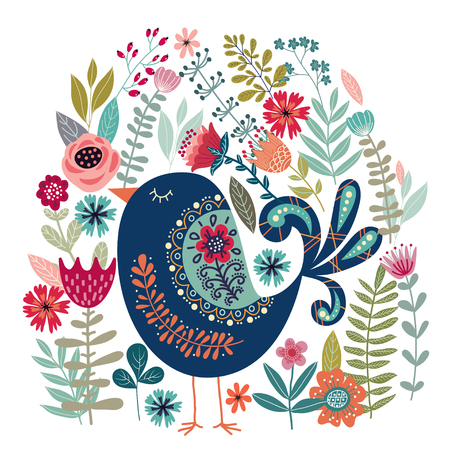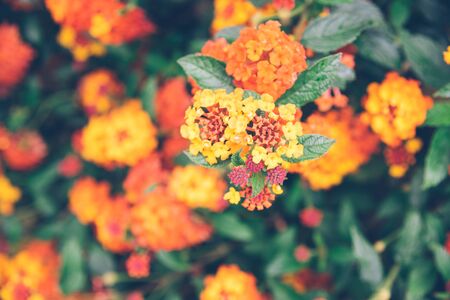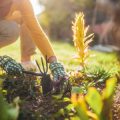Choosing Native Flowers for Your Region
When planning your wildlife-friendly cut flower garden, one of the most important steps is selecting flowers that are native to your region. Native plants are naturally adapted to your local climate, soil, and weather conditions, making them easier to grow and more resilient throughout the seasons. By choosing native cut flowers, you not only enjoy a garden that thrives with minimal intervention, but you also support the birds, bees, butterflies, and other pollinators that are essential to your local ecosystem. Native blooms like Black-eyed Susans, Purple Coneflowers, and Bee Balm not only look stunning in bouquets but also provide vital food sources for wildlife. Embracing locally native species helps maintain biodiversity and creates a sustainable outdoor space right on your urban balcony or small backyard. As you plan your cut flower selections, consider checking resources from local native plant societies or university extension offices to find the best varieties for your area. This thoughtful approach lays a strong foundation for a beautiful and environmentally responsible garden that both you and local wildlife will love.
Designing for Both Beauty and Habitat
When planning a wildlife-friendly cut flower garden in a small urban space, it’s important to think beyond aesthetics. A well-designed layout can attract birds, bees, and butterflies while providing you with fresh blooms all season long. Here are some practical tips to help you create a garden that’s both beautiful and beneficial for local wildlife.
Tips for Small-Space Garden Layouts
- Layer Your Plantings: Use vertical space by incorporating trellises, shelves, or hanging baskets. This maximizes bloom area and creates shelter for pollinators.
- Diversify Flower Shapes: Choose flowers with a mix of open (like zinnias), tubular (like salvias), and clustered forms (like yarrow) to cater to different pollinator preferences.
- Color Variety: Select blooms in a spectrum of colors—reds, yellows, blues, and purples—to attract a wide range of pollinators.
- Stagger Bloom Times: Plan for early, mid, and late-season flowers to provide continuous food sources.
- Create Pathways: Use stepping stones or mulch paths for easy access without compacting soil around plant roots.
Sample Plant Selection Table
| Plant Name | Bloom Shape | Color | Bloom Time | Wildlife Attracted |
|---|---|---|---|---|
| Zinnia | Daisy-like/Open | Red, Pink, Orange | Summer–Fall | Bees, Butterflies |
| Salvia | Tubular/Spiked | Purple, Blue, Red | Spring–Fall | Hummingbirds, Bees |
| Yarrow | Clustered/Flat-topped | Yellow, White, Pink | Late Spring–Summer | Butterflies, Bees |
| Coneflower (Echinacea) | Daisy-like/Open | Purple, Pink, White | Midsummer–Fall | Bees, Birds (seed heads) |
| Lavender | Spiked/Clustered | Purple, Blue | Early Summer–Mid Summer | Bees, Butterflies |
Simplifying Urban Wildlife Gardening: Quick Tips
- Avoid pesticides: Opt for organic practices to keep pollinators safe.
- Add water features: Even a shallow dish with pebbles offers birds and bees a place to drink.
- Select native plants: Local species are best adapted to support area wildlife.
- Leave some seed heads: Let a few flowers go to seed to feed birds through fall and winter.
- Edit regularly: Remove diseased or overcrowded plants to keep the garden healthy and attractive to wildlife.
By thoughtfully arranging your small-space cut flower garden with these principles in mind, you’ll create a vibrant patchwork that not only looks stunning from your city balcony but also serves as an essential habitat for urban wildlife.

3. Eco-Friendly Gardening Practices
Creating a wildlife-friendly cut flower garden isn’t just about choosing the right plants—it’s also about adopting sustainable gardening techniques that foster a healthier ecosystem. Here are some eco-conscious tips to help your urban oasis thrive while supporting local wildlife:
Composting for Healthier Soil
Start by composting your kitchen scraps and yard waste. Adding compost to your flower beds enriches the soil, reduces landfill waste, and encourages beneficial microorganisms that support robust plant growth. In American cities, countertop compost bins make it easy to collect food scraps in small spaces before transferring them to community or backyard compost piles.
Mulching for Moisture and Habitat
Mulching is a simple way to retain soil moisture, suppress weeds, and add organic matter back into your garden. Use locally-sourced wood chips, shredded leaves, or straw as mulch. Not only does this reduce your need for watering (which is especially helpful during hot American summers), but mulch also provides shelter for pollinators and beneficial insects.
Reducing Chemical Usage
Cutting back on chemical fertilizers and pesticides is crucial for wildlife safety. Embrace organic options like neem oil or insecticidal soap to manage pests without harming bees, butterflies, and birds. You can also encourage natural pest predators—like ladybugs and praying mantises—by planting native flowers and providing water sources.
Smart Watering Practices
To conserve water, opt for drip irrigation systems or water early in the morning when evaporation rates are lowest. Grouping plants with similar water needs together makes care easier and more efficient, especially on busy urban balconies.
Community Engagement
If you’re part of an apartment complex or urban neighborhood, consider joining local gardening groups or co-ops to share resources and knowledge about sustainable practices. Working together can amplify your positive impact on local pollinator populations and foster a sense of community pride in green spaces.
4. Providing Food, Water, and Shelter
Creating a wildlife-friendly cut flower garden in an urban space is about more than just planting beautiful blooms—its also about making your garden a haven for local birds, pollinators, and beneficial insects. By thoughtfully adding simple features, you can support city-dwelling wildlife while still keeping your garden stylish and functional for harvesting fresh flowers.
Integrating Wildlife-Friendly Features
Even in small urban backyards or balconies, you can easily incorporate food, water, and shelter to attract helpful creatures. Here are some practical ideas:
| Feature | Benefits | Urban-Friendly Tips |
|---|---|---|
| Bird Feeders | Supports seed-eating songbirds and adds lively activity to your garden. | Choose compact, squirrel-proof feeders; fill with sunflower or nyjer seeds. |
| Water Sources | Attracts birds, bees, and butterflies for drinking and bathing. | Add a shallow birdbath or set out a saucer with pebbles for bees on your balcony. |
| Sheltering Plants | Provides cover for insects and nesting spots for birds. | Plant dense shrubs like native viburnum or leave tall grasses uncut in one corner. |
Choosing the Right Plants for Urban Wildlife
Selecting native flowers and foliage is key. Native plants are adapted to local conditions and provide the best resources for wildlife. Try mixing nectar-rich blooms (like coneflowers or bee balm) with seed-producing annuals (such as sunflowers or zinnias). Include a few evergreens or climbers to offer year-round shelter, even when your cut flower beds are resting.
Design Tips for Small Spaces
- Use vertical space: Hang bird feeders from railings or hooks.
- Cluster water sources near sheltering plants for safety.
- Create layers: Place taller plants at the back and low-growing ones up front to maximize cover without sacrificing harvest space.
Keep It Clean and Safe
Remember to clean birdbaths and feeders regularly to prevent disease, and avoid using pesticides that could harm pollinators. With just a few thoughtful touches, your urban cut flower garden can become a vital pit stop for city wildlife—while giving you endless bouquets right outside your door.
5. Harvesting Responsibly
One of the joys of a cut flower garden is bringing fresh blooms inside, but in a wildlife-friendly garden, harvesting needs to be done with care and respect for your visiting pollinators and local critters. Before you reach for your snips, take a moment to observe which flowers are actively attracting bees, butterflies, or hummingbirds. Prioritize cutting from areas with lower pollinator activity, and always leave plenty of blossoms behind—aim to harvest no more than one-third of blooms from any single plant at a time. This ensures there’s still ample nectar and pollen available throughout the season.
When planning your harvest, try to stagger your cuts. Instead of taking all your flowers from one section, spread out your picking so that every area retains some color and structure. This not only keeps your yard looking lively but also provides ongoing habitat and food sources for insects and birds. Don’t forget about seed heads! Leaving some spent flowers intact allows birds like goldfinches to feed and also supports beneficial insects that overwinter in stems and foliage.
If you’re growing native wildflowers or perennials, consider skipping the first flush of blooms altogether—early-season flowers are especially important for emerging pollinators. Later in the summer, as plants grow fuller, you’ll have more flexibility to cut while still maintaining wildlife value. And remember: resist the urge to tidy up too much. A little wildness is part of the charm and essential for healthy urban ecosystems.
6. Seasonal Care and Maintenance
Spring: Starting Strong
As winter fades, give your wildlife-friendly cut flower garden a fresh start. Clean up debris gently to avoid disturbing overwintering insects and beneficial critters. Add a layer of compost or organic mulch to enrich the soil and retain moisture for new growth. This is the ideal time to sow seeds of native annuals and perennials, as well as to divide crowded clumps of established plants, encouraging healthier blooms and more diverse habitats for pollinators.
Summer: Supporting Growth and Wildlife
Throughout summer, keep your garden hydrated with deep, infrequent watering to encourage deep root growth. Deadhead spent flowers regularly to prolong blooming and attract pollinators searching for nectar. Avoid using pesticides or chemical fertilizers—opt for natural pest control methods like introducing ladybugs or encouraging birds that feed on harmful insects. If you have a birdbath or bee hotel, refresh the water frequently and check for cleanliness to provide safe resources for visiting wildlife.
Fall: Prepping for Rest
Let some seed heads remain on your plants in fall, offering food for birds and overwintering shelter for beneficial bugs. Cut back only diseased or damaged foliage, leaving healthy stems and leaves as habitat throughout the cooler months. Spread an additional layer of mulch around the base of your plants to insulate roots against winter chills and reduce weed competition come spring.
Year-Round Tips for a Thriving Garden
- Rotate Plantings: Change up your annual flower varieties each year to prevent soil depletion and disease buildup while giving pollinators fresh sources of nectar.
- Monitor Soil Health: Test soil annually and amend with compost or leaf mold as needed to maintain fertility without synthetic chemicals.
- Encourage Diversity: Mix flower types, heights, colors, and blooming times so wildlife always finds something appealing.
Staying Connected with Nature
The beauty of a wildlife-friendly cut flower garden is that it evolves with the seasons. By tending your space thoughtfully throughout the year, you’ll create not just a source of beautiful bouquets but a sanctuary that supports bees, butterflies, birds, and other urban wildlife—right outside your door.


